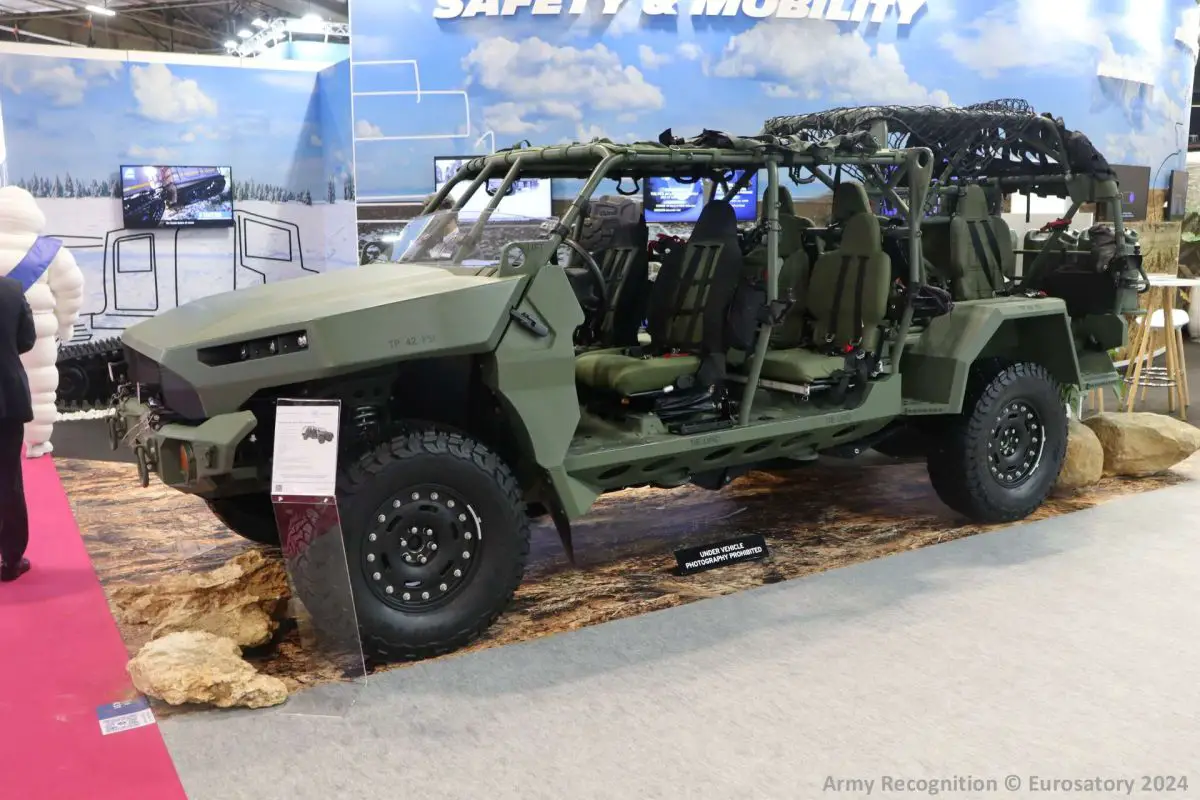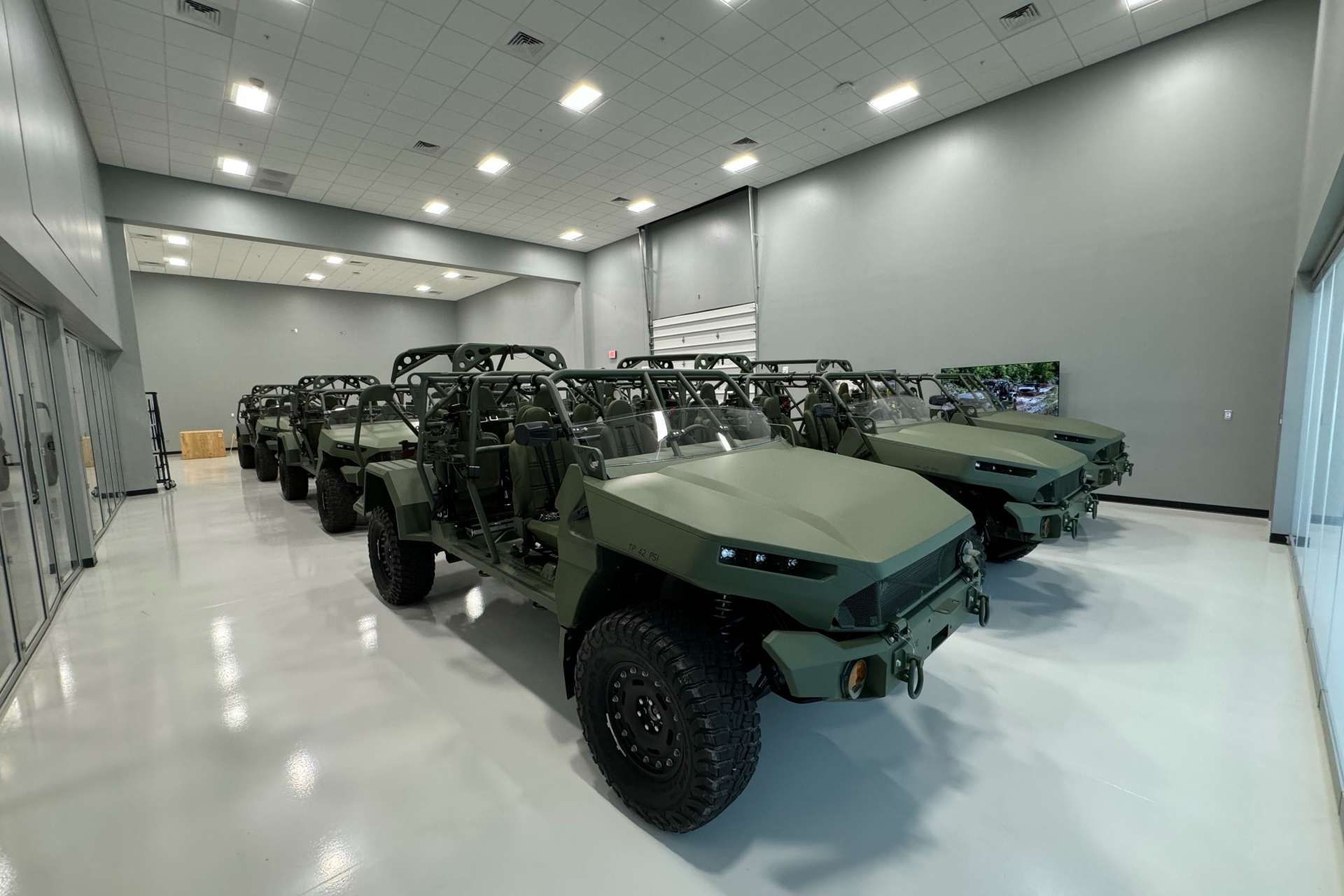Breaking News
GM Defense Canada To Deliver 90 Light Tactical Vehicles for Canadian Army.
On July 23, 2024, Bill Blair, the Canadian Minister of National Defence, announced a $35.8 million investment to equip Canadian Army personnel in Latvia with 90 new Light Tactical Vehicles (LTVs) based on GM Defense's Infantry Squad Vehicle. The growing Canadian military presence in Europe, including Latvia, aims to strengthen NATO's defensive capabilities, with Canada expected to have more than 2,200 soldiers deployed by 2026 as the NATO Multinational Battle Group Latvia transitions to NATO Multinational Brigade Latvia.
Follow Army Recognition on Google News at this link

GM Defense Canada will deliver 36 cargo variants, accommodating two to four soldiers and large loads, and 54 personnel variants, designed to transport teams of up to nine soldiers, with an option for an additional 18 vehicles. (Picture source: Army Recognition)
The new LTVs will enhance the Canadian Army's operational effectiveness, allowing them to navigate complex terrain and isolated locations that are inaccessible to larger vehicles. These vehicles will also assist in transporting combat equipment, reducing the physical burden on individual soldiers. GM Defense Canada has been awarded the contract to deliver 36 cargo and 54 personnel variants of the LTVs, with an option for up to an additional 18 vehicles. The personnel variant is designed to transport teams of up to nine soldiers, while the cargo variant can accommodate two to four soldiers and larger loads. This configuration will enable Light Forces to carry weapons, personal effects, and combat supplies sufficient for 72 hours of self-sufficient operation.
The contract includes training, logistics support, technical manuals, additional vehicle content sourced from Canadian companies, and up to two years of spare parts for the LTV fleet. Based on the Infantry Squad Vehicle (ISV) platform to ensure quick delivery, the first five Light Tactical Vehicles (LTVs) are expected to arrive in Canada later this month for training purposes. The Canadian Army plans to begin Initial Cadre Training in late August 2024, with the remaining vehicles anticipated to be delivered to Latvia by early October 2024.
This procurement marks the first phase of the Light Forces Enhancement (LFE) Project, which aims to provide a specialized wheeled off-road vehicle capability to the Canadian Armed Forces' Light Forces. Phase 2 of the LFE Project will involve the delivery of up to 222 Tactical Mobility Platforms and up to 23 light trailers to the Canadian Army’s Regular and Reserve Forces. Each phase will have a separate competitive bidding process, which could result in different vehicles being procured.

This procurement marks the first phase of the Light Forces Enhancement (LFE) Project, while Phase 2 will involve the delivery of up to 222 Tactical Mobility Platforms to the Canadian Army’s Regular and Reserve Forces. (Picture source: Commander of the Canadian Army)
Lieutenant-General Michael Wright, Commander of the Canadian Army, highlighted the significance of this investment in revitalizing the Army’s Light Forces. He indicated that the new LTVs will enhance the Army's range and response times both domestically and internationally. Positioned on NATO's eastern border, these vehicles will enable the rapid deployment of a light infantry battle group to reinforce the Forward Land Forces Brigade in Latvia, as the Canadian Army’s Light Force infantry soldiers will be the primary users of the LTVs and Tactical Mobility Platforms.
The LTVs are based on GM Defense's Infantry Squad Vehicle (ISV), developed in autumn 2019 after an 18-week development period. In 2020, the United States Army selected the ISV to transport nine infantrymen and for its adaptability to air transport by military aircraft such as the C-17, C-130, and A-400M. The US Army awarded a contract in June 2020 for the production of 649 ISVs, with the goal of fielding these vehicles across 11 Infantry Brigade Combat Teams by 2025. By April 2023, 300 vehicles had been delivered, moving to full-rate production.

The US Army awarded a contract in June 2020 for the production of 649 ISVs, with the goal of fielding these vehicles across 11 Infantry Brigade Combat Teams by 2025. (Picture source: US DoD)
The vehicle recently completed the 2023 UAE Armed Forces Summer Trials, which involved nearly 2,000 kilometers of testing on highways, sand dunes, soft sand tracks, and rocky walls. These trials assessed the ISV’s endurance and capabilities under extreme conditions, including its ability to carry maximum payloads. The vehicle also underwent Maintenance Trials to evaluate its sustainability and ease of repair. Following these trials, the ISV received certification, and GM Defense signed a cooperative agreement with the Tawazun Council to support military, security, and government operations in the UAE and the broader region.
On May 20, 2024, GM Defense and Mistral Inc. announced a partnership to integrate UVision's Hero-120 loitering munition with GM Defense’s Infantry Squad Vehicle (ISV). This new variant of the ISV, equipped with four launch tubes for the Hero-120, is designed to enhance tactical capabilities by combining mobility and lethality. The Hero-120 drone, developed by UVision Air and supplied by Mistral Inc., serves multiple purposes, including reconnaissance, electronic warfare, and loitering munitions, and meets the US Marine Corps' requirements for the Organic Precision Fires-Mounted (OPF-M) system.
The Infantry Squad Vehicle (ISV), designated M1301 by the US Army, is developed in standard and all-electric variants, including a variant equipped with a .50 caliber gun. It features a fully welded aluminum armor body for protection against small arms fire and IEDs. The vehicle utilizes a GM Duramax 2.8L turbo diesel engine, producing 186 horsepower, paired with a GM Hydro-Matic 6L50 six-speed transmission and a GM AutoTrac two-speed transfer case. It incorporates Dana M190 and M220 axles with electronic locking differentials and includes a Roll Over Protection System (ROPS) to ensure durability and safety in various operational environments.


























